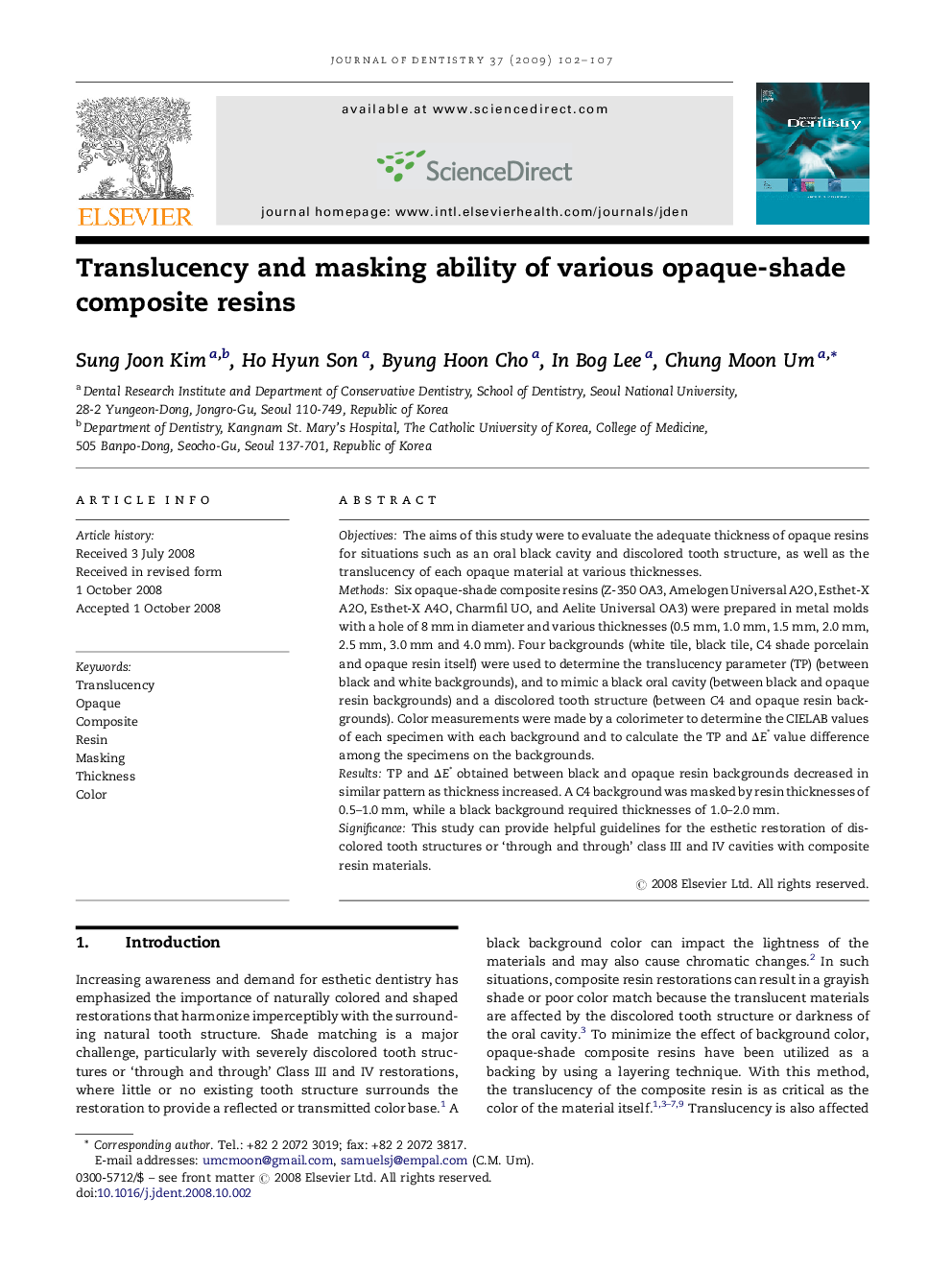| Article ID | Journal | Published Year | Pages | File Type |
|---|---|---|---|---|
| 3145782 | Journal of Dentistry | 2009 | 6 Pages |
ObjectivesThe aims of this study were to evaluate the adequate thickness of opaque resins for situations such as an oral black cavity and discolored tooth structure, as well as the translucency of each opaque material at various thicknesses.MethodsSix opaque-shade composite resins (Z-350 OA3, Amelogen Universal A2O, Esthet-X A2O, Esthet-X A4O, Charmfil UO, and Aelite Universal OA3) were prepared in metal molds with a hole of 8 mm in diameter and various thicknesses (0.5 mm, 1.0 mm, 1.5 mm, 2.0 mm, 2.5 mm, 3.0 mm and 4.0 mm). Four backgrounds (white tile, black tile, C4 shade porcelain and opaque resin itself) were used to determine the translucency parameter (TP) (between black and white backgrounds), and to mimic a black oral cavity (between black and opaque resin backgrounds) and a discolored tooth structure (between C4 and opaque resin backgrounds). Color measurements were made by a colorimeter to determine the CIELAB values of each specimen with each background and to calculate the TP and ΔE* value difference among the specimens on the backgrounds.ResultsTP and ΔE* obtained between black and opaque resin backgrounds decreased in similar pattern as thickness increased. A C4 background was masked by resin thicknesses of 0.5–1.0 mm, while a black background required thicknesses of 1.0–2.0 mm.SignificanceThis study can provide helpful guidelines for the esthetic restoration of discolored tooth structures or ‘through and through’ class III and IV cavities with composite resin materials.
